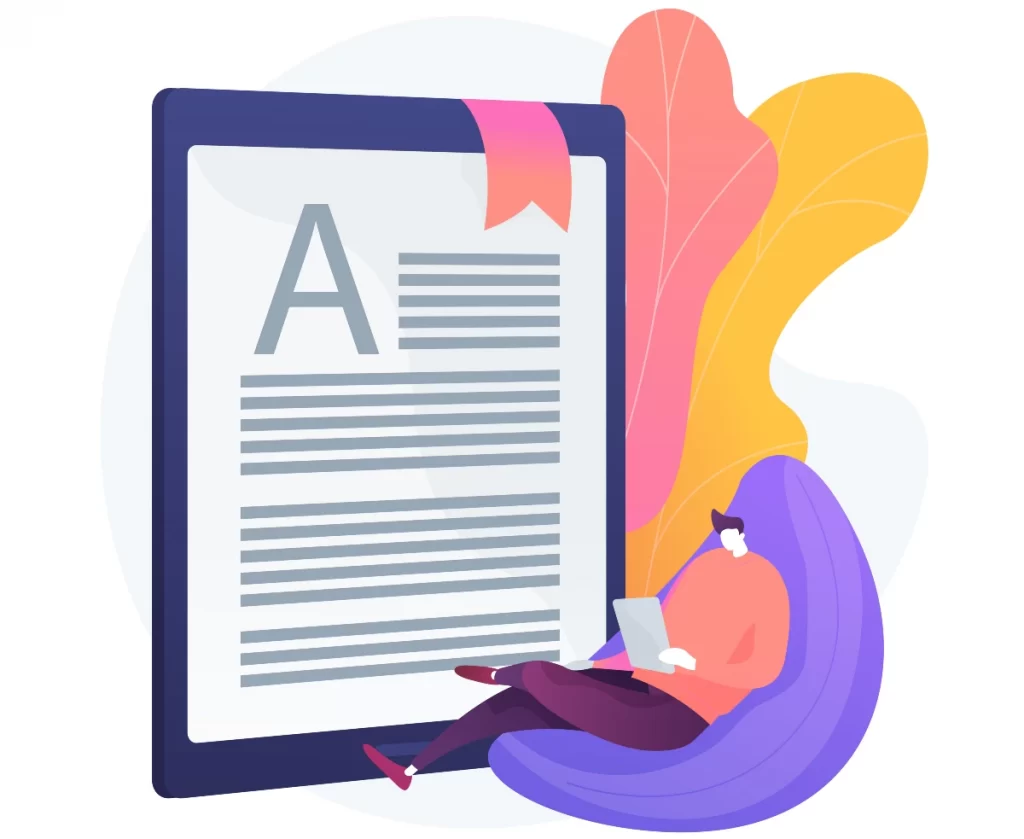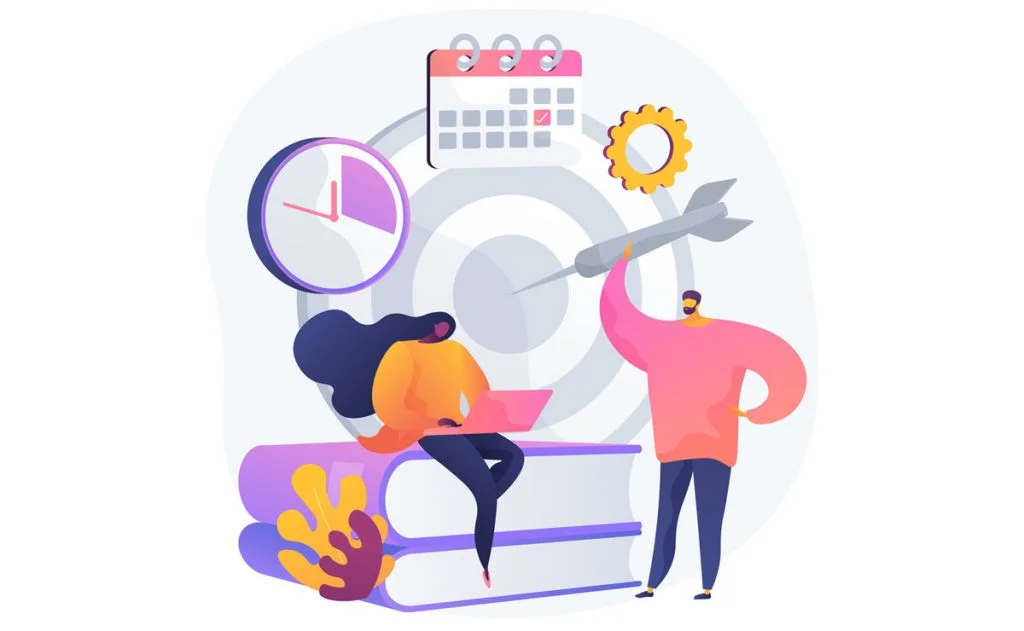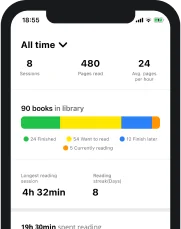If you’re anything like us here at Basmo, your passion for books and reading goes way beyond the borders of traditional, recreational reading. This activity has been around for centuries and its value is undeniable. The benefits in terms of general knowledge, physical and mental health, and the success that is generally associated with having healthy reading habits have determined people to spend decades trying to figure out ways to read more and better.
Bionic reading seems to be the most recently developed reading method and while its effects are still being studied and analyzed, the claims look quite promising.
Since we are dedicated to learning everything there is to know about books and reading here at Basmo, we did some research to provide you with the most complete and accurate information about bionic reading and how it can help you become a more efficient reader.
What is bionic reading?
Bionic reading is a newly developed reading method designed to aid in the speed reading process through a couple of tweaks. The method was recently invented by a Swiss developer called Renato Casuut and he claims that by guiding your eyes through “fixation points”, your reading speed and level of comprehension are going to be improved. What this actually means is that through bionic reading, you are actually reading a text where several letters are written in bold in every word.
Starting from the premise that some fonts are easier and quicker to read than others, it does make sense that tweaking the way words look on a piece of paper can have an impact on our reading speed. Bionic reading takes this to a different level, by taking advantage of the way our brain works and its habit to fill in the blanks. By having the first couple of letters in every word written in bold, your brain tends to use those as fixation points and use its previous reading experience to complete the word without actually reading the rest of the letters.
Does bionic reading work?
Since this reading method has been developed very recently, there is still no bionic reading study for us to examine and share conclusions from. Considering the claims of the method, we are fairly confident that studies are upcoming in the near future, but until then, all we have to rely on is our own experience and the experience of others.
Those who used bionic reading tend to agree that it does have a positive effect on reading speed and comprehension. In theory, the brain is capable of absorbing information at a much higher rate than your eyes are able to read. Since the whole purpose of the method is to reduce the involvement of your eyes in the reading process by only pushing them to read part of each word instead of the whole thing, logic dictates that bionic reading really does increase reading speed.
What is still to be revealed through studies is how the method works on different people. While some of those who used bionic reading can confirm that the method works and increased their reading speed, others claimed to have felt no real effect or even that they found it too distracting for prolonged reading sessions.
While there is no hard evidence to suggest that bionic reading is an effective way to increase reading speed, we must admit that the method makes sense and that the claims of its developer are quite believable.
Should you use bionic reading?
If you are a passionate reader and you are interested in all aspects of reading, we can’t see why you wouldn’t give bionic reading a shot. While we have no hard evidence to back us up to encourage you to try it in order to improve your reading speed, we don’t have anything that would suggest it could have a negative impact on your performance either.
It is up to you to give it a try and see for yourself if the claims of its developer are true for you or not. We are all unique and we respond quite differently to certain things. While bionic reading could turn out to be the thing that’s been missing from certain readers’ lives, it could have no effect on others. What you should definitely take into account is the fact that before you start using it, you will need to understand exactly how it works and how you should apply its principles. Luckily for you, we found out everything there is to know about bionic reading and we will be expanding on its functionality and methodology further below.
How does bionic reading work?
To understand how this method was developed, we first need to have a quick look at what is happening inside our brains when we read. The most important thing to factor in when analyzing the way we read is that the action is based on recognizing shapes, decoding their meaning when placed together, and comprehending the message these symbols are sending when they are placed in a certain order.
It is a complex process our brains weren’t naturally designed to be able to complete. Learning to read fluently generally takes a couple of years and it leads to significant changes in our brain’s anatomy and operation method.
That being said, bionic reading takes our ability to recognize shapes and decode their meaning to a new level. As we become more experienced readers, our brain tends to no longer needs the entire word to understand its meaning, because it recognizes its shape from previous encounters.
Remember this message that went viral a couple of years ago?
“7H15 M3554G3 53RV35 7O PR0V3 H0W 0UR M1ND5 C4N D0 4M4Z1NG 7H1NG5! 1MPR3551V3 7H1NG5! 1N 7H3 B3G1NN1NG 17 WA5 H4RD BU7 N0W, 0N 7H15 LIN3 Y0UR M1ND 1S R34D1NG 17 4U70M471C4LLY W17H0U7 3V3N 7H1NK1NG 4B0U7 17, B3 PROUD!”
Moreover, research conducted at Cambridge University has shown that letters don’t even need to be in the correct order within words for our brains to be able to understand them. According to the results of the study, people are able to read words regardless of how scrambled they are as long as the first and last letters were correctly placed at the beginning and the ending of a word. Snuods pttrey fcasintanig, rhgit?
In the same way, your brain adapts to reading this text that has both numbers and letters or words with scrambled letters by recognizing the shapes of words and doing the rest of the work based on previous experience, bionic reading exploits our brain’s ability to autocomplete words based solely on their first couple of letters and the overall context.
By reading just the first couple of letters from each word, the brain is forced to use its previous experience to complete the words while reading, which makes the process faster. Also, because the brain is forced to work just a little bit harder than it normally does when reading, the developer of the bionic reading method claims that comprehension is also improved because of the higher level of involvement that is forced upon our concentration and focus.
How to use bionic reading?
Bionic reading comes, at least for the moment, as an app or API that needs to be used in order for you to be able to take advantage of the method. You can either use the Android or iOS apps on your phone, or you can choose the browser app that can be used on your laptop or PC. The apps allow you to convert regular text into bionic reading text and you can easily do so by copying and pasting the desired text in the app of your choice.
For the moment, very few apps come with a bionic reading functionality built in but given the facts that the method claims to provide better reading speed and performance and that the API is free to download and use as an enterprise, we expect it to become quite a popular option in the coming years.
For now, if you are a fan of the method, you should know that the apps will allow you to convert texts from all kinds of different formats from regular text to bionic reading text, and that includes e-books.
One thing you are definitely going to want when you are going to try bionic reading for the first time is to measure your reading speed and see how effective it is for you. Luckily for you, your reading speed is now easier to measure than ever. Using a reading tracking app like Basmo will be extremely beneficial for you.
With Basmo, for example, it couldn’t be easier. Any reading session you start within the app will be timed and your reading performance will be constantly monitored. The app is going to automatically calculate (or predict) your reading speed based on the duration of your reading session and the number of pages you go through.
To test the effect of bionic reading on your speed, simply read a couple of pages with regular text and record your reading speed with Basmo. Afterward, convert a text into bionic reading material and measure your speed again. Comparing the two results is going to provide you with a pretty clear idea of how effective bionic reading is.
What are some bionic reading examples?
This is what a bionic reading text looks like. What do you think, does it make you read faster than you normally would because of the anchor points that are bolded in every word? Do you feel like your eyes only read the bolded letters at the beginning of words and the brain fills in the blanks?
In the Basmo office, the opinions about bionic reading have been quite different from one team member to another. While for some the method has proven to be a refreshing experience that allowed them to focus better on the texts and go through them quicker, others complained that the process was rather tiring and that the bolded letters were quite distracting.
What do you think? Is bionic reading a good tool for fast reading or is it too distracting?
Is Bionic Reading the Same as Speed Reading?
No. Speed reading is a reading method or strategy that encapsulates a series of different techniques to increase the speed at which reading is done. Bionic reading, while no hard evidence exists to support that, is a reading technique that can lead to reading quicker. So, if you will, bionic reading can be, at best, if the claims are going to be proven through studies, a speed reading technique.
Final thoughts
Getting started with bionic reading is not going to be much of a challenge. The apps available at the moment will allow you to easily convert regular text into bionic reading text. The challenge is going to be figuring out if it really helps or not. Use Basmo to measure your reading speed and see if bionic reading works well for you.
Image by vectorjuice on Freepik







